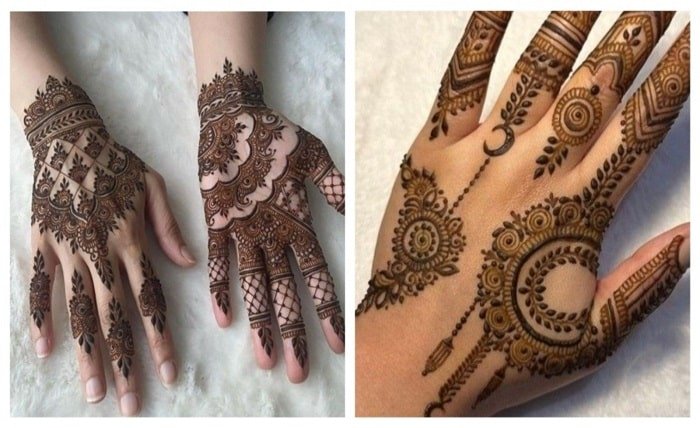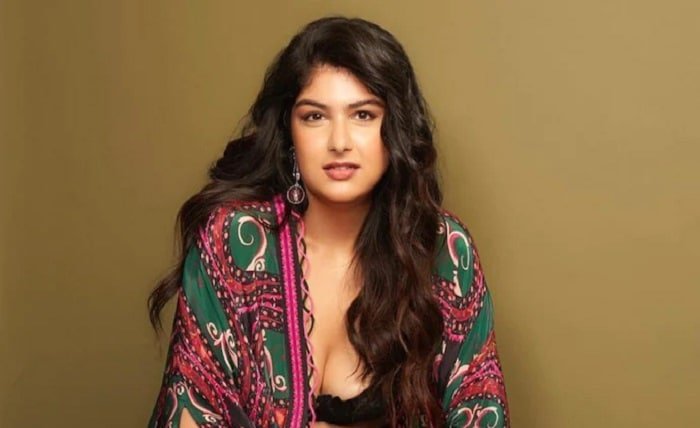Mehndi, also known as henna, holds immense cultural significance in many parts of the world. In India, Pakistan, the Middle East, and North Africa, mehndi is used to mark auspicious occasions and celebrations. Mehndi isn’t just body art—it’s a symbol of joy, tradition, and blessings passed down generations. Brides traditionally adorn their hands and feet with intricate mehndi before weddings, symbolizing beauty, prosperity, and love. Mehndi is often applied during festivals like Karva Chauth, Eid, Diwali, and Teej, making it a vital part of cultural expression. The universal appeal of mehndi has also reached the West, where it’s embraced as a temporary tattoo for fashion and style.
Mehndi Designs: From Traditional Patterns to Modern Styles
Mehndi designs have evolved over time while retaining their cultural roots. Traditional mehndi patterns feature paisleys, floral motifs, and elaborate mandalas. These designs often cover the entire palm, arms, and feet, especially for weddings. In contrast, modern mehndi incorporates minimalist elements, geometric shapes, and even personal symbols or initials. The variety in mehndi styles includes Arabic, Indian, Pakistani, Moroccan, and contemporary fusion designs. Each type of mehndi design carries unique characteristics; for instance, Arabic mehndi uses bold lines and gaps, while Indian mehndi is dense and detailed. Mehndi artists are now blending styles to create customized designs for clients.
Mehndi for Weddings: Rituals, Beliefs, and Bridal Trends
Mehndi plays a central role in weddings, especially in South Asian and Middle Eastern cultures. The mehndi ceremony is a pre-wedding celebration filled with music, dance, and laughter. It’s believed that the darker the bride’s mehndi color, the deeper the love between the couple. Mehndi is not just for aesthetics—it’s a ritual believed to bring good fortune, fertility, and protection from evil spirits. Bridal mehndi can take hours to apply, featuring complex designs with the groom’s name hidden within. Some brides opt for portraits, miniature stories, or significant dates within their mehndi designs. Mehndi for weddings is also about bonding—friends and family come together to celebrate.
Mehndi Application: Tips for Long-Lasting and Dark Stains
Achieving a deep and long-lasting mehndi stain requires technique, patience, and aftercare. The first step is to choose quality mehndi paste, ideally organic and freshly prepared. Clean and dry skin ensures better mehndi absorption. Once applied, mehndi should be left on for at least 6-8 hours or overnight. Natural ingredients like lemon and sugar paste help seal the mehndi and enhance color development. After removal, avoid washing hands with soap or water immediately. Mehndi oxidizes with time, so the color usually deepens over 24-48 hours. For best results, avoid contact with water and apply balm or oil to preserve the mehndi design and color.
Mehndi in Festivals and Celebrations Across Cultures
Mehndi is synonymous with celebration. During religious festivals like Eid, women of all ages gather to apply mehndi in joyful anticipation. In Hindu culture, mehndi is applied during Teej, Navratri, and Raksha Bandhan. Across different cultures, mehndi is not just for women—men also adorn mehndi for traditional or spiritual purposes. In African cultures, mehndi is used during rites of passage, while in Western countries, mehndi is becoming popular at music festivals, baby showers, and even corporate events. Mehndi is a symbol of happiness, and its presence at festive gatherings adds color, beauty, and a shared sense of tradition and togetherness.
Mehndi for Modern Fashion: Celebrities and Global Trends
Mehndi is no longer limited to weddings and religious occasions. It has taken a fashionable turn globally, with celebrities like Beyoncé, Madonna, and Rihanna flaunting mehndi-inspired designs. Temporary henna tattoos have become a stylish trend, especially among the youth. Fashion runways and magazines often showcase mehndi as part of boho-chic or ethnic-inspired styles. Western brides sometimes opt for mehndi as a fusion element in multicultural weddings. The versatility of mehndi makes it suitable for minimalist wrist bands, finger tips, or bold back designs. With Instagram and Pinterest trends, modern mehndi is evolving as both a fashion statement and a global art form.
Mehndi Artists and Their Creative Innovations
The role of mehndi artists has expanded beyond traditional expectations. Talented mehndi artists now have global recognition, sharing their creativity on social media and teaching through online platforms. Many mehndi artists run full-time businesses, offering bridal services, classes, and even custom-designed mehndi cones. With modern tools and techniques, mehndi artists now create symmetrical, highly detailed designs quickly and efficiently. Some artists specialize in white mehndi, glitter mehndi, or even neon-colored mehndi for unique looks. Mehndi artists also innovate by incorporating pop culture, logos, cartoons, and personalized stories into their designs, making mehndi a personalized and memorable experience.
Conclusion
Mehndi is a timeless tradition that continues to evolve with changing times. Whether it’s adorning a bride’s hands, adding charm to a festival, or serving as a fashion accessory, mehndi holds a special place in cultures worldwide. From traditional ceremonies to global runways, mehndi bridges the gap between history and modernity. Its versatility, symbolism, and artistic appeal make it more than just a form of body art—it’s a celebration of life, beauty, and expression. As the world embraces new forms of self-expression, mehndi continues to shine as a beautiful blend of heritage and creativity.
FAQs
Q1: What is the difference between mehndi and henna?
Mehndi and henna refer to the same thing—mehndi is the Hindi/Urdu term, while henna is the Arabic/English term for the plant and the dye it produces.
Q2: How long does mehndi last on the skin?
Mehndi typically lasts 1 to 3 weeks, depending on skin type, care, and the quality of the henna used. Proper aftercare can prolong its vibrancy.
Q3: Is mehndi safe for all skin types?
Yes, natural mehndi made from pure henna leaves is safe. However, black henna or chemical-laced products can cause allergic reactions, so always test a small patch first.
Q4: Can mehndi be used for hair dyeing?
Yes, mehndi is commonly used as a natural hair dye. It conditions hair, adds shine, and can enhance color, especially for those avoiding chemical products.
Q5: What are some trending mehndi designs in 2025?
In 2025, popular mehndi trends include minimalistic designs, finger ring-style motifs, geometric patterns, and fusion styles combining Indian and Arabic elements.






